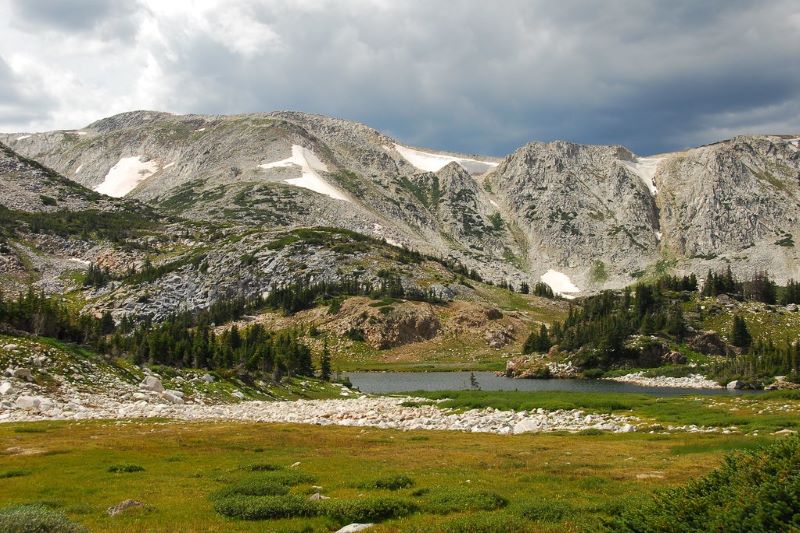ESS3.D Global Climate Change
Below are lesson resources for the Disciplinary Core Idea Global Climate Change.
Vegetative Communities and Climate Change

Image: Adam Zolyak - licensed under the CC Attribution-NonCommerical-NoDerivs 2.0 Generic license
Grade Level: 9-12
Performance Expectation Connections:
HS-LS2-2. Use mathematical representations to support and revise explanations based on evidence about factors affecting biodiversity and populations in ecosystems of different scales.
HS-LS4-5. Evaluate the evidence supporting claims that changes in environmental conditions may result in: (1) increases in the number of individuals of some species, (2) the emergence of new species over time, and (3) the extinction of other species.
Science and Engineering Practices: Engaging in Argument From Evidence; Analyzing and Interpreting Data; Using Mathematics and Computational Thinking
Crosscutting Concepts: Patterns; Cause and Effect
Disciplinary Core Ideas: Adaptation; Interdependent Relationships in Ecosystems; Ecosystem Dynamics, Functioning, and Resilience; Biodiversity and Humans; Weather and Climate; Global Climate Change
Possible Guiding Questions: Why does treeeline exist on mountains? How does temperature, precipitation, and elevation affect vegetative communities? Why do certain communities of plants grow in certain locations and under certain conditions? How might climate change impact the presence of treeline on mountains? What impacts would a loss of alpine environment have on humans? How might climate change affect the plant communities that we live near?
Possible Instructional Uses: This phenomenon provides an entrance point into discussing how various environmental conditions, such as temperature and precipitation, impact the communities of plants that grow in certain areas. There is also an opportunity to explore how climate change will impact plant communities, including how threats to alpine environments would affect humans.
Contributors: Martha Inouye, Clare Gunshanen, Sienna Wessel, Matthew Bisk
Date Uploaded: 11/11/21
Climate Change in Wyoming

Image: Rick Cummings - licensed under the CC Attribution 2.0 Generic license
Grade Level: 9-12
Performance Expectation Connections:
HS-ESS3-5. Analyze data and the results from global climate models to make an evidence-based forecast of the current rate of global or regional climate change and associated future impacts to Earth systems.
Science and Engineering Practices: Analyzing and Interpreting Data; Constructing Explanations and Designing Solutions
Crosscutting Concepts: Cause and Effect; Stability and Change
Disciplinary Core Ideas: Global Climate Change
Possible Guiding Questions: What are the current impacts of climate change in Wyoming? How might climate change affect Wyoming's ecosystems in the future? How are the different types of ecosystems in Wyoming responding to climate change? How can past climate data allow us to project Wyoming's future climate?
Possible Instructional Uses: You may use this phenomenon to explore the current and future impacts of climate change in Wyoming. This lesson also provides an opportunity to take a data-driven approach to analyzing climate change and forecasting into the future. This may also serve as a starting point to deeper investigations into how particular species in Wyoming have responded to climate change.
Contributors: Martha Inouye, Clare Gunshanen, Sienna Wessel, Matthew Bisk
Date Uploaded: 1/9/22
